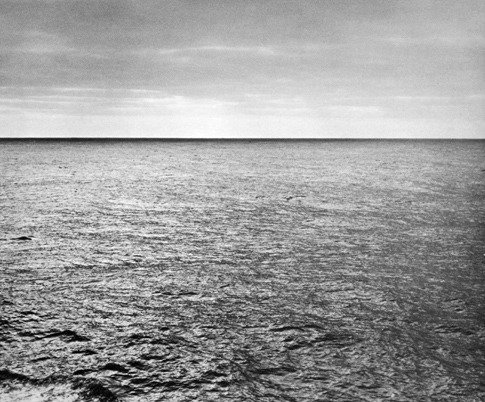Bill Bollinger
dal 21/4/2012 al 29/7/2012
Segnalato da
21/4/2012
Bill Bollinger
Sculpture Center, New York
The Retrospective. Focusing on the gesture of construction and the physical limits of material, his work addressed ideas of gravity, balance and material nature. The exhibition focus on the period from 1966-70 and includes approximately 40 works including sculpture, works on paper, and Bollinger's only known film.

SculptureCenter is pleased to host Bill Bollinger: The Retrospective. This exhibition, surveys the brief, yet historically significant career of Bill Bollinger (1939-1988), focusing on the period from 1966-70. SculptureCenter is the only U.S. venue for this retrospective, and the exhibition will be on view April 22- July 30, 2012 with a public reception on Sunday April 22nd 5 - 7 pm.
Bollinger made significant waves in the late 1960s, challenging the limits of sculpture and expanding thought regarding concept, materiality, and commodity. Bollinger's works were made from primarily pre-fabricated industrial supplies, such as sawhorses, oil drums, rubber tubing and cyclone fence. Focusing on the gesture of construction and the physical limits of material, Bollinger's work addressed ideas of gravity, balance and material nature. According to him his interests lay not 'in the aesthetics of form but in the fact of form'. Bollinger frequently used water for as a material, transforming it into something sculptural with mass and form as it fills a plastic hose or a steel barrel. Bollinger summed up his attitude to the making of his work: 'It is all very easy to execute, does not exist until it has been executed, ceases to exist when it has been taken down.' This approach, while radical and ultimately influential, is also likely a factor in the subsequent disappearance of the work from art history.
The exhibition will be presented in the entirety of SculptureCenter's industrial building and will include approximately 40 works including sculpture, works on paper, and Bollinger's only known film. Several of Bollinger's early "channel pieces" (which Bollinger referred to as "paintings") and "pipe pieces" will be shown. These works, made from lightweight aluminum sections, interact with architectural space utilizing the line as sculptural form. Rope Piece, 1969, is a length of manila rope stretched over a horizontal distance, anchored to the floor at each end by eyebolts creating a taut line floating just above the ground. Cyclone Fence, 1968 (recreated 2012 for this exhibition) was Bollinger's first use of this material and was shown in the legendary Nine at Leo Castelli exhibition at the Castelli Warehouse organized by Robert Morris. Highly characteristic of Bollinger's oeuvre, this gorgeous work capitalizes on the properties of the wire mesh, and with only a minimal gesture, effects a commanding presence. The works on paper range from more painterly works -- executed with a spray brush, or drawn with graphite, oil stick, pen or pencil -- to sketches and technical drawings for sculptural works.
Bill Bollinger originally studied aeronautical engineering at Brown University and turned to art when he moved to New York City in 1961. He had his first solo show at Bianchini Gallery in 1966 and over the course of the next five years, Bollinger was included in some of the most historically important exhibitions of the 1960s, including Live in Your Head: When Attitudes Become Form (Kunsthalle Bern, 1969); Anti-Illusion: Procedures/Materials (Whitney Museum of American Art, 1969); Nine at Leo Castelli(Castelli Warehouse, 1969); Information (Museum of Modern Art, 1970) and the Whitney Museum Annual of 1971 and Biennial of 1973. In 1970 under the auspices of the Bykert Gallery, Bollinger mounted a massive exhibition in the Starrett-Lehigh Building in New York. Bollinger moved upstate in 1971 and while he continued to make work throughout his life, his last solo exhibition in New York was at OK Harris Gallery in 1974. He died in 1988 at age 48.
Bill Bollinger: The Retrospective is curated by Christiane Meyer-Stoll in conceptual collaboration with Rolf Ricke and produced by the Kunstmuseum Liechtenstein, the ZKM Zentrum fur Kunst und Medientechnologie Karlsruhe, and The Fruitmarket Gallery, Edinburgh. The exhibition has been previously on view at each of these venues. SculptureCenter is the only venue for the exhibition in North America. Bill Bollinger: the Retrospective is the first major presentation of Bollinger's work since 1970, and the first retrospective.
Exhibition related programs
SculptureCenter has organized a series of exhibition related programs including a panel conversation with curators and art historians invested in Bill Bollinger's work and legacy, a group discussion with young artists who examine Bollinger's work through the lens of their own practices, and an evening of musical performances and poetry.
Image: Photograph taken by the artist during his crossing of the Atlantic, 1968. Invitation card, Bykert Gallery, 1969.
Bill Bollinger, courtesy Staatliche Museen zu Berlin, Kunstbibliothek
For group rates and tour information, please contact John Emison at jemison@sculpture-center.org or 718 361 1750.
For additional information and images please contact Frederick Janka, press@sculpture-center.org or 718.361.1750 x 117
Member Preview: Bill Bollinger: The Retrospective: Sunday, April 22, 2012, 3:30-5:00 PM. SculptureCenter Members are invited to be the first to view the much anticipated upcoming exhibition Bill Bollinger. Gain exclusive pre-opening access to the first major presentation of Bollinger's work since 1970, and the first retrospective. Complimentary drinks will be served.
Sculpture Center
New York USA
44-19 Purves Street Long Island City - New York
Exhibition Hours:
Thursday - Monday, 11am - 6pm
Closed Tuesdays and Wednesdays.
Admission:
There is a $5 suggested donation for entry, $3 for students.



